cd-rom
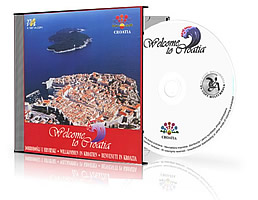 CD-ROM "Welcome to Croatia" (CroMaps navigator road map)
CD-ROM "Welcome to Croatia" (CroMaps navigator road map)
is the first multimedia presentation of Croatia and entire Croatian tourism in 4 languages: Croatian, English, Italian and German.
Travel, Agency services, Hotels, Camps, Nautical, Health, Religious, Sports, Embassies, Consulates, Custom Formalities, Traffic, Currency, Gastronomy and many other Tourist information with survey of Croatian natural beauties (UNESCO) and Cultural Heritage in textual, photo, video and sound form.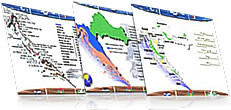
There are 6,694 settlements in Croatia: 205 towns and cities and 6,489 villages. 57,1% of the population live in cities and towns, and 42,9% live in villages. Four towns have more than 100,000 inhabitants.
The greatest city is Zagreb with around 800,000 inhabitants, followed by Split with 190,000, Rijeka with 170,000 and Osijek with 105,000 inhabitants. Six cities (Dubrovnik, Sisak, Varazdin, Šibenik, Vinkovci and Bjelovar) have between 25,000 and 50,000 inhabitants. Cities mainly belong to two cultural-architectural styles: the Mediterranean (in the coastal area) and the Middle-European (in the continental area).
CD-ROM "Croatian travel guide"
1998. year
in 3 languages: Croatian, English and German. Set of searchable city maps with geocoded information about city streets, cities
Road map Croatia
City maps - Zagreb, Split, Dubrovnik, Rijeka, Osijek, Pula, Zadar, Šibenik, Karlovac, Požega, Đakovo, Slavonski Brod, Vinkovci, Virovitica, Bjelovar, Koprivnica, Knin, Križevci, Čakovec, Našice, Opatija, Crikvenica, Pazin, Krk, Njivice, Baška, Malinska, Punat, Novi Vinodolski
Croatia - General information, county seats, visas, passport, customs formalities, methods of payment in the republic of croatia, tourist association, hotels, motels, pensions, camps, spas, restaurants, travel agencies, hospitals, banks, embassies and consulates in croatia, picture postcards...
Road traffic - Traffic regulations, border crossings, croatian automobile club, most important european tunnels, distances, autoclubs, authorized car distributors for croatia, service, trade spare car parts, motor car transport companies, rent a car, petrol stations...
Air traffic - Regulations for private air traffic, croatia airlines, airports, sport airfields, airline companies...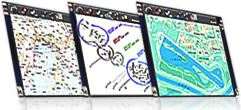
Sea traffic - Regulations for the foreign nauticals, time-table, international maritime border crossings, portmasters offices, marinas, authorized boat & yacht dealers for croatia, charter agencies, boat & yacht service, most important european boat-ferry lines...
Rail traffic -Information, railways information, eurocity and intercity trains, international trains, croatian railways headquarters, agency for selling travelling tickets...
CD-ROM "LADO"
in 4 languages: Croatian, English, France and German
LADO - the Folk Dance Ensemble of Croatia - is a national, professional folklore ensemble founded in 1949, its task and aim being to researc, collate, artistically interpret and arrange choreography, for the most beautiful examples selected from the boundless wealth of Croatian music and dance tradition.
The seat of the ensemble is in Zagreb, the capital of Croatia, itself a city of long standing tradition , steeped in rich history. In the 50 years of its existence, LADO has travelled the lengths and breadths of the World, and has performed on the world's most prestigious stages and in its most famous concert halls, never failing to win the highest acclaims of delighted audiences, from prominent names in the fields of culture, art and politics, as well as from professional critics, who rate LADO as being one of the most superb folklore ensembles anywhere in the world.
, steeped in rich history. In the 50 years of its existence, LADO has travelled the lengths and breadths of the World, and has performed on the world's most prestigious stages and in its most famous concert halls, never failing to win the highest acclaims of delighted audiences, from prominent names in the fields of culture, art and politics, as well as from professional critics, who rate LADO as being one of the most superb folklore ensembles anywhere in the world.
CD-ROM "From the Old Photos" (CroMaps navigator - city map Karlovac)
Ordering: Karlovac Municipal Museum
On December 18th 1999 the Municipal Museum of Karlovac celebrates its 95th anniversary. Nowadays Museum has 6 departments: archeology, history, cultural-history, ethnography, natural science and gallery "Vjekoslav Karas".
All the departments, with their collections represent diversity of historical and cultural heritage of the town and traditional and natural resources of its region. Collection of photographs of the Municipal Museum of Karlovac covers a period since the beginning of a photography - daguerreotypes, calotypes and ambrotypes until the beginning of the Second World War.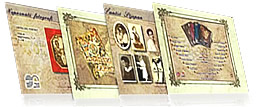
Besides photographers working in Karlovac, the collection has works of photographers from other Croatian towns as well as foreigners. This is the first catalogue of museum collections representing only the photographers who were working in Karlovac since the second half of the 19th c. until 1940. Among them there are those who were not professionals.
As we think that the amateurs, as well as "Photo club Karlovac" deserve a separate catalogue, this time we will show photographs attributed to just two amateurs - Alfred Peyer and Dragutin Fogina. In the group of "unknown photographers" there are certainly more of them.
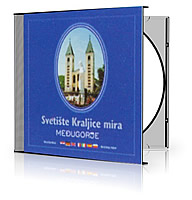 CD-ROM "Shrine of the Queen of Peace - Međugorje"
CD-ROM "Shrine of the Queen of Peace - Međugorje"
INFORMATIVNI CENTAR "MIR" MEĐUGORJE & VA-COPY multimedia - in 7 languages
These CD pages are product by the Information centar "Mir" Medjugorje and VA-COPY multimedia. They contain the offical position of the Shrine of the Queen of Peace in Medjugore.
On June 24, 1981, at about 6pm, six young parishioners from Medjugorje: Ivanka Ivankovic, Mirjana Dragicevic, Vicka Ivankovic, Ivan Dragicevic, Ivan Ivankovic and Milka Pavlovic, saw on the hill Crnica (on the place called Podbrdo) an apparition, a white form with a child in her arms. Surprised and scared, they did not approach.
The next day at the same time, June 25, 1981, four of them, Ivanka Ivankovic, Mirjana Dragicevic, Vicka Ivankovic and Ivan Dragicevic, felt strongly drawn towards the place where, the day before, they saw the One who they had recognised as Our Lady. Marija Pavlovic and Jakov Colo joined them. The group of Medjugorje visionaries was formed. They prayed with Our Lady and talked to Her. From that day onward, they had daily apparitions, together or separately. Milka Pavlovic and Ivan Ivankovic have never seen Our Lady any more.
CD-ROM "Hotel Castle Bezanec"
Hotel dvorac Bežanec (CroMaps navigator - location)
2001 y. - in 2 languages: Croatian, English
Multimedia CD rom project that presents work of the owner of "Castle Bezanec", mister Krizanec Sinisa, in direction of introducing architectural pearls of inheritance. In its content he is equally introducing monuments of zero category, as well as, hotel arrangements.
Wedding: the ceremony, special lunch or dinner, picnic party, catering service...
...we have 6 banquet salons which can accommodate 4-150 people, while our exterior areas can accommodate up to 300 people, with the possibility of putting up a tent!
... the restorated castle Bezanec is the outcome of one big love! With its romantic presence, the hotel is ready to make all the wishes of love couples come true. Dear guests, we are looking forward to meet You and we have already prepared gifts for Your first visit.
In life, everything spins around love, so the hidden feelings that I experienced in my youth did not avoid me either. Then, when the castle still reminded me of "Sleeping Beauty" or any other more horrible story which had to be invented, I frequently visited an overgrown park around the castle, as a blonde girl was playing there. At that time she was to me the most beautiful creature of this world with her look as in a doe, hovering as an angel. Being so much in love, I did not notice the castle, since eyes were looking for eyes - but, finally, not to bother you too much, instead of a  kiss of a desired love, I developed an attachment to the castle. In this relationship in which it will be renewed, the castle suffered more than anybody else.The historical injustice was redressed.
kiss of a desired love, I developed an attachment to the castle. In this relationship in which it will be renewed, the castle suffered more than anybody else.The historical injustice was redressed.
The castle - forgotten and lonely, got a desired partner, and for truth's sake, I'll admit that it became the monument of defiance of one big unrequited young love."
(a quotation from the book by Siniša Krizanec "You will all sue me")
CD-ROM "Island Silba"
2002.y - in 2 languages: Croatian, English
Silba is island of Zadar’s archipelag, further nord of Zadar.
The island is exactly on the old route: Venezija,Pula, Mali Losinj, (Silba), Zadar, or equal on the route: Rijeka, Rab, (Silba), Zadar.
Silba was then taken over by the famous Venetian family Morosini, retaining the possession of Silba until the first quarter of the 19th century. In 1838 the Morosini sold Silba to the rich American returnee, Mark Ragusin from Veli Lošinj. Due to a 13-year-old tax dispute with the locals, Ragusin decided to sell the island to the inhabitants themselves, and each inhabitant was to pay proportionally for his posse

ssion, all amounting to 5025 Bavarian thalers. News of the purchase arrived on the island on March 19, 1852, and in remembrance of that event the inhabitants of Silba celebrate the feast of Saint Joseph, which takes place on that day, every year. The period of prosperity for Silba was in the 17th and 18th cent. It was the locality of seamen and owners of hundreds of sailships. Strong seafaring business conditioned the development of an above-average culture in the way of living, dressing and home decorating. There were more than 1200 inhabitants on the island at the time. The island of Silba today is under the administration of the city of Zadar.
CD-ROM "Hrvatsko Zagorje"
2003.y - in 4 languages: Croatian, English, Italian and German
On the small territory with a great tradition are located beautuful castles and manor houses, the fascinating ethnologic village in Kumrovec including the birthplace of Josip Broz Tito - a major figure in world history. Many exceptional secural cultural monuments and archeological localities, the monument of Matija Gubec representing the begining of Peasant's Revolt, the monument Zelenjak, the numerous churches and shrines including the famous pilgrimage site of Marija Bistrica, many spas with the finest quality medicinal water and the excellent local indigenous foods, should be a reason to visit Croatian Hihglands. And all of this is encirceled by the beautiful green hills of Zagorje.
Zagorje is the area of picturesque and cultivated hills, low hills and forests. It is a “green park” with numerous castles and manors, with the most valued church buildings of the Croatian baroque and modest "Zagorje houses". The area of Kajkavian speech is one of the most beautiful and the most romantic part of Croatia. The area full of natural beauty and interesting things is made for rest and recreation during the whole year: hiking, swimming, skiing, hunting and fishing. In this Croatian area rich in monuments, together with famous resorts and thermal springs in forest valleys with indoor and outdoor swimming pools, Zagorje also offers numerous culinary specialities offered by many inns.
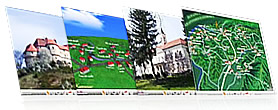
Krapina
A town in the valley of the Krapinica river in Croatian Zagorje offers visitors a partly preserved medieval fortress, baroque Franciscan monastery, churches and many other famous old buildings, and especially lavish museums. A festival of Kajkavian (ethnic)music is held annually. It was inhabited in prehistoric times, and first mentioned in 1193.
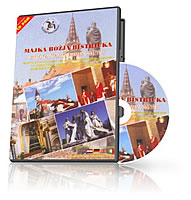 CD-ROM "The mother of Bistrica"
CD-ROM "The mother of Bistrica"
2003.y - in 4 languages: Croatian, English, Italian and German
The shrine of the Mother of God of Bistrica in the small town of Marija Bistrica is the largest Croatian parish site of religious celebration and it has a central place in the life of the Croatian people. That is why it has been officially proclaimed as the national shrine of Mary. Hundreds of thousands of pilgrims come to Marija Bistrica every year to bow down before close to God, consolation and concilation and returning to their homes filled with new strength for a Christian life in a family and society.
Votive Statue The votive statue the Mother of God of Bistrica dates from the end of the 15th century and belongs to the series of black Madonnas, althought as it was discovered during the restoration its dark colour is not original. The late Gothic wooden statue of the Bistrica Mother of God is the work of an anonymous master.
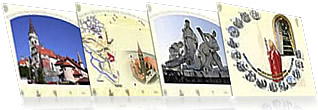 The expressive strenght of this statue is less in the artistic achievement than in its very religious and national significance. The statue was firstly placed in the ancient shrine at Vinski Vrh in 1499, and then it was buried in Marija Bistrica in 1545 and rediscovered in 1588. It was forgotten again and walled in, then refound for the second time in 1685.
The expressive strenght of this statue is less in the artistic achievement than in its very religious and national significance. The statue was firstly placed in the ancient shrine at Vinski Vrh in 1499, and then it was buried in Marija Bistrica in 1545 and rediscovered in 1588. It was forgotten again and walled in, then refound for the second time in 1685.
